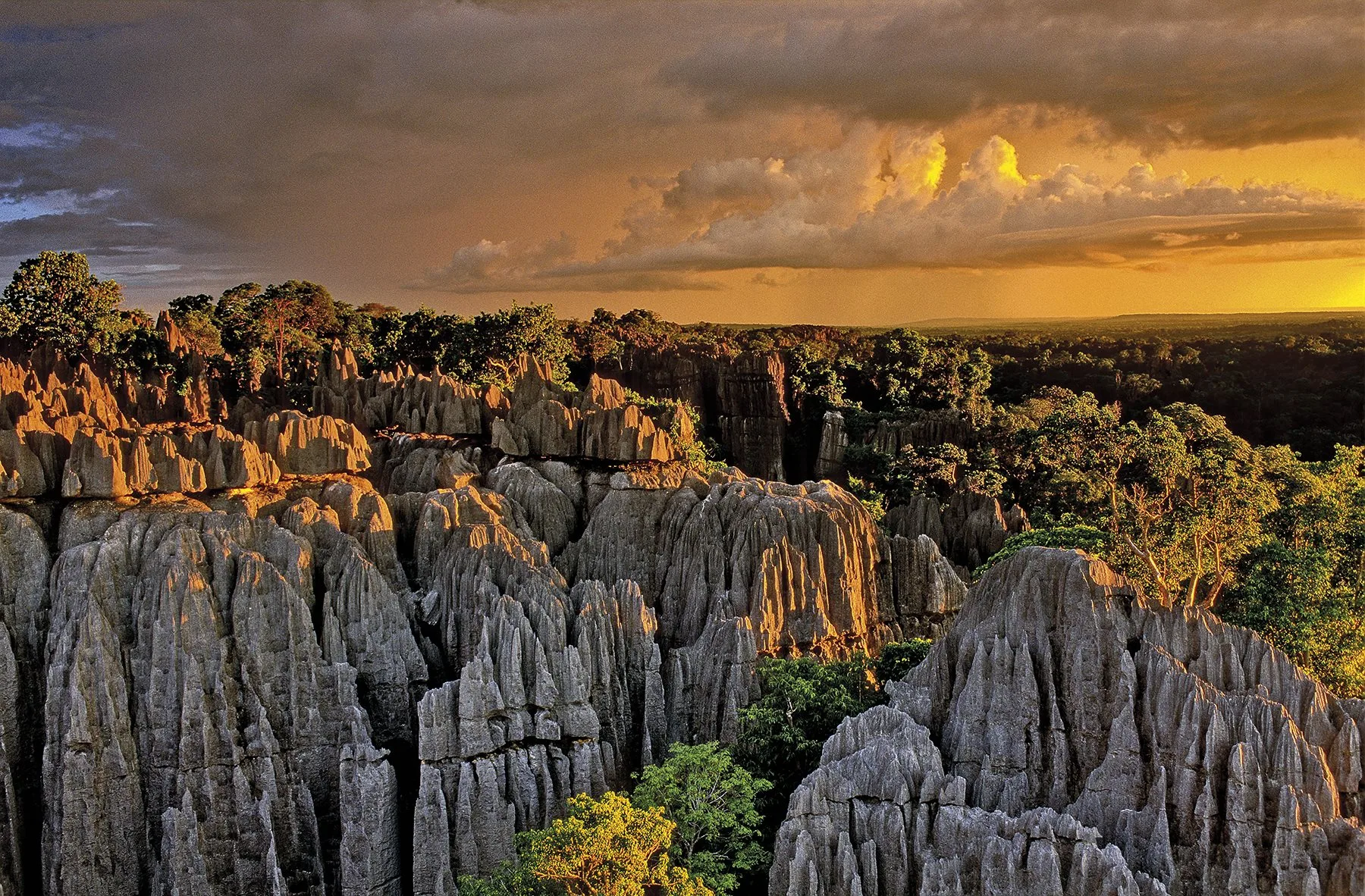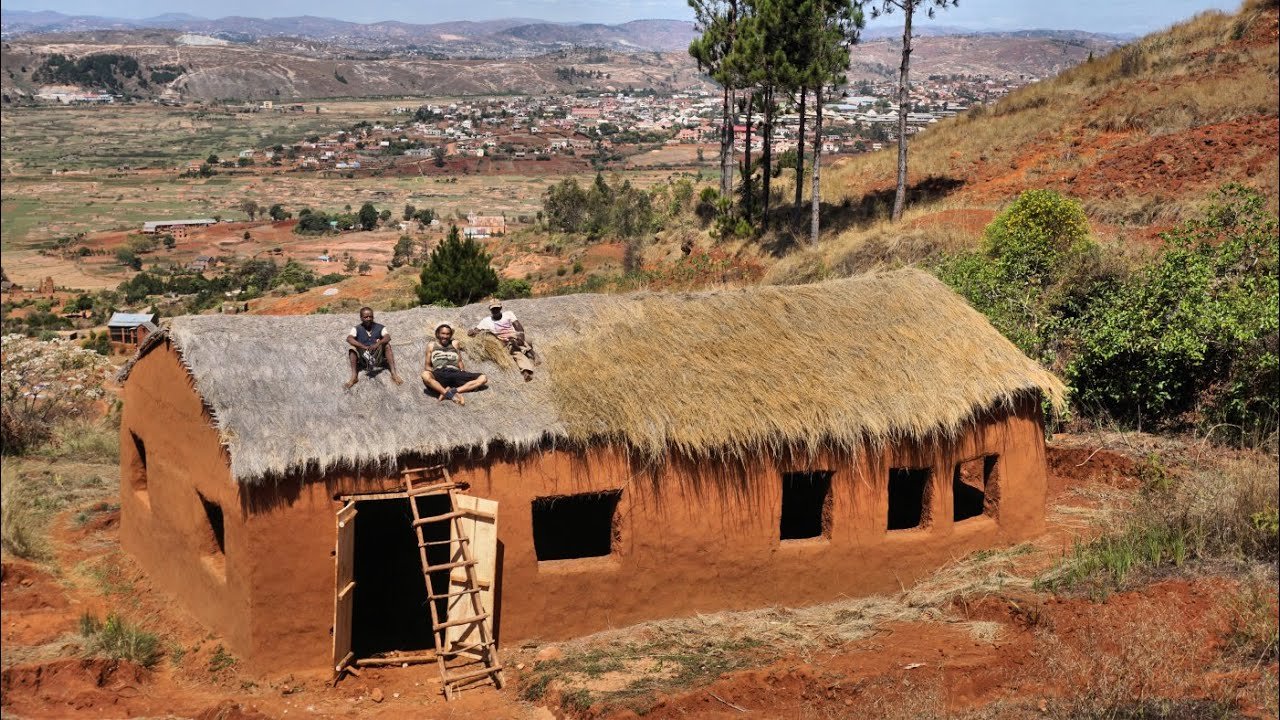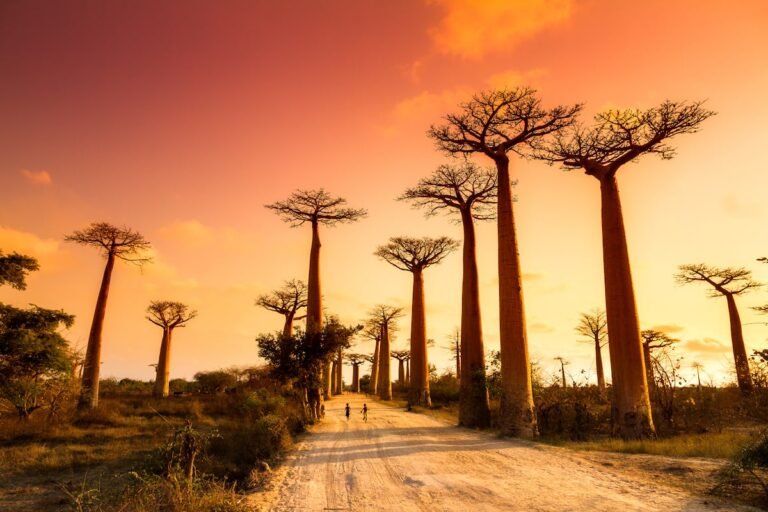Discover the 12 best things to do in Madagascar, from spotting wild lemurs to hiking dramatic stone forests and relaxing on tropical islands.
12 Best Things to Do in Madagascar
Madagascar, the world’s fourth-largest island, lies off the southeastern coast of Africa. What sets it apart isn’t just its size—it’s the sheer uniqueness of everything within its borders. Over 90% of Madagascar’s wildlife is found nowhere else on Earth. Whether you’re an adventure traveler, nature lover, or culture explorer, this island offers something extraordinary.
A Land of Unique Biodiversity
Madagascar is a biodiversity hotspot like no other. Lemurs, chameleons, baobab trees, and ancient rainforests exist in delicate harmony. The island’s ecosystems range from lush tropical forests and dry deserts to rugged canyons and coral reefs.
When to Visit for the Best Experience
The dry season from April to November is ideal. This is when you’ll enjoy cooler temperatures and better access to national parks, especially those with unpaved roads. For whale watching, visit from June to September.
1. Explore the Avenue of the Baobabs
These ancient giants stand like natural totems along a dusty road in western Madagascar. This is one of the most photographed spots on the island—and for good reason.
Sunset Photography Paradise
As the sun dips below the horizon, it casts golden light on the towering trunks of the baobabs, creating a breathtaking silhouette. Perfect for photographers and romantics alike.
How to Get There
Located near Morondava, the Avenue of the Baobabs is accessible via a rugged drive or local tour.
2. Discover Tsingy de Bemaraha National Park
This otherworldly landscape features a jagged limestone forest that looks like a field of stone needles.

A UNESCO World Heritage Site
The Tsingy is not only visually stunning but also rich in endemic species. The park is split into “Great Tsingy” and “Little Tsingy,” both offering scenic trails and rope bridges.
Hiking the Razor-Sharp Limestone Forests
Bring your climbing gloves! You’ll need them for the park’s narrow, spiky trails. The views are unforgettable.
3. Relax on Nosy Be Island
Nosy Be, known as “Perfume Island,” is Madagascar’s most famous beach destination.
Beaches, Diving, and Island Hopping
Swim in crystal-clear waters, dive with manta rays, or take a boat to nearby islands like Nosy Iranja or Nosy Komba.
Local Food and Culture
Enjoy fresh seafood grilled on the beach, sip on local rum, and dance to island rhythms.
4. Visit Lemur Island (Vakona Forest Reserve)
Want to get face-to-face with Madagascar’s most iconic residents? Lemur Island is a must-visit.
Close Encounters with Madagascar’s Famous Lemurs
These playful creatures often jump right onto your shoulder—perfect for animal lovers and kids.
5. Trek through Andasibe-Mantadia National Park
One of the best places to see lemurs in the wild.
Spotting the Indri Indri and Other Wildlife
The Indri Indri is the largest living lemur and makes a haunting call that echoes through the forest.
Eco-Tourism and Lodges
Stay in nearby eco-lodges and experience a rainforest dawn like nowhere else on Earth.
6. Take a Cultural Tour in Antananarivo
Madagascar’s capital, often shortened to “Tana,” is a colorful, chaotic, and fascinating city.
Historic Palaces and Bustling Markets
Explore the Queen’s Palace, stroll through Independence Avenue, and barter for souvenirs in local bazaars.
Malagasy Cuisine Experience
Try “Romazava,” a traditional meat stew, or street-side grilled skewers called “brochettes.”
7. Snorkel or Dive in Île Sainte-Marie
This idyllic island off Madagascar’s east coast is a hidden gem for water lovers and adventure seekers.
Coral Reefs and Shipwrecks
Île Sainte-Marie offers vibrant marine life and crystal-clear waters. Snorkel above coral reefs or dive to explore old pirate shipwrecks beneath the waves.
Whale Watching Season
From June to September, humpback whales migrate here. Join a guided boat tour to witness these gentle giants breaching just offshore.
8. Discover Isalo National Park
Known as Madagascar’s “Grand Canyon,” Isalo’s striking landscapes are a hiker’s dream.
Natural Pools and Canyons
Take a trail to the Piscine Naturelle, a clear freshwater pool surrounded by palm trees. Hike through sandstone formations and deep canyons that change color with the light.
Flora, Fauna, and Sunsets
You’ll spot ring-tailed lemurs, rare birds, and desert-adapted flora. End your day watching the sun dip below Isalo’s rugged cliffs.
9. Enjoy a River Trip on the Tsiribihina
Float down the Tsiribihina River on a traditional wooden pirogue or motorboat for an off-the-beaten-path experience.
Traditional Pirogue Adventures
This multi-day trip includes camping on riverbanks, waterfall swims, and encounters with local villages along the route.
Camping and Wildlife Views
Expect sightings of herons, lemurs, and even crocodiles, all set against dramatic cliff backdrops and serene waters.
10. Experience the Malagasy Village Life
To truly understand Madagascar, you need to experience its people.

Homestays and Local Traditions
Stay with a Malagasy family in a rural village. Participate in daily life, from farming and cooking to learning traditional dances and songs.
Learning Malagasy Crafts
Try your hand at weaving raffia, making clay pots, or carving wood in the traditional Zafimaniry style—a UNESCO-recognized art form.
11. Visit the Anja Community Reserve
A grassroots conservation project near Ambalavao, this reserve offers a deep connection to nature and local community efforts.
Ring-Tailed Lemurs and Sacred Forests
Walk the trails with a guide to spot dozens of ring-tailed lemurs in their natural habitat. Learn about sacred groves and the spiritual connection locals have with the land.
12. Explore the Spiny Forest and Ifaty Beaches
The southern coast holds a fascinating, lesser-known treasure—Ifaty and the surrounding Spiny Forest.

Rare Succulents and Coastal Relaxation
This otherworldly forest features bizarre trees, thorny plants, and hidden wildlife. After exploring, unwind on the quiet beaches of Ifaty, perfect for snorkeling or lazing in a hammock.
FAQs About Madagascar Travel – Best Things to Do in Madagascar
What is Madagascar best known for?
Madagascar is best known for its unique wildlife, especially lemurs, baobab trees, and biodiversity that exists nowhere else on Earth.
Is Madagascar safe for tourists?
Yes, Madagascar is generally safe for travelers, though petty theft can occur. Stick to well-known tourist areas, travel with reputable guides, and always check current travel advisories.
How many days should you spend in Madagascar?
Ideally, 10 to 21 days will allow you to experience both cultural sites and natural parks without rushing.
Do I need a visa to travel to Madagascar?
Yes. Most travelers need a tourist visa, which can be obtained on arrival or online. Always check the latest requirements based on your nationality.
What’s the best way to get around?
Traveling by private car with a driver, taxis-brousse (local minivans), or domestic flights are common options depending on your budget and schedule.
Can I see lemurs in the wild?
Absolutely! Parks like Andasibe, Ranomafana, and Anja Reserve are top spots for seeing lemurs in their natural habitats.
A Journey Like No Other
Madagascar is more than just a travel destination—it’s a living, breathing showcase of Earth’s creativity. Whether you’re hiking through a limestone forest, floating down a river, watching whales breach, or laughing as lemurs leap across your path, every moment in Madagascar leaves a lasting impression.
With such an amazing variety of things to do in Madagascar, the only question is: how soon can you pack your bags?





